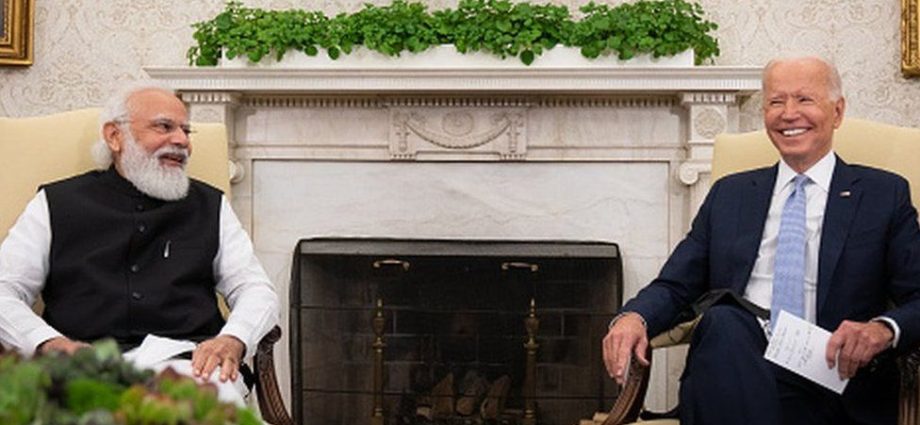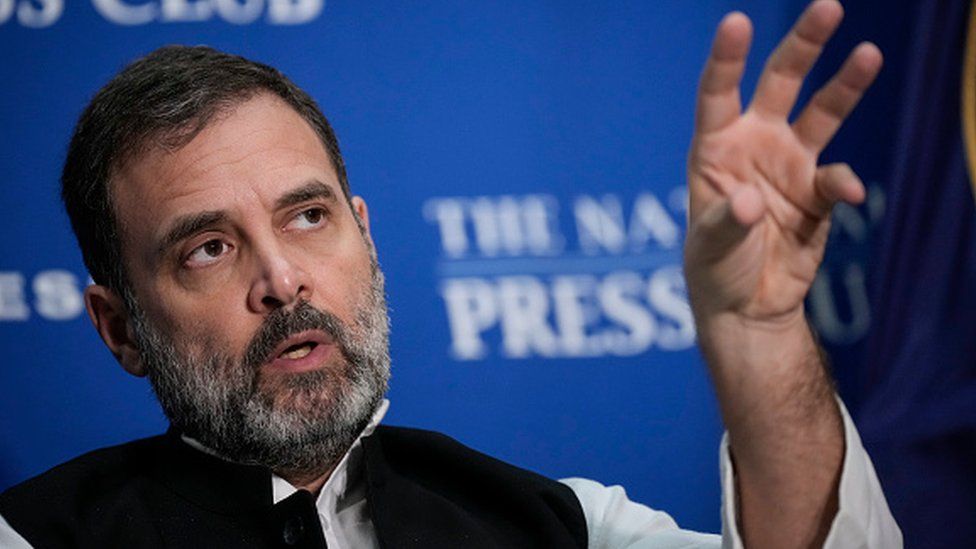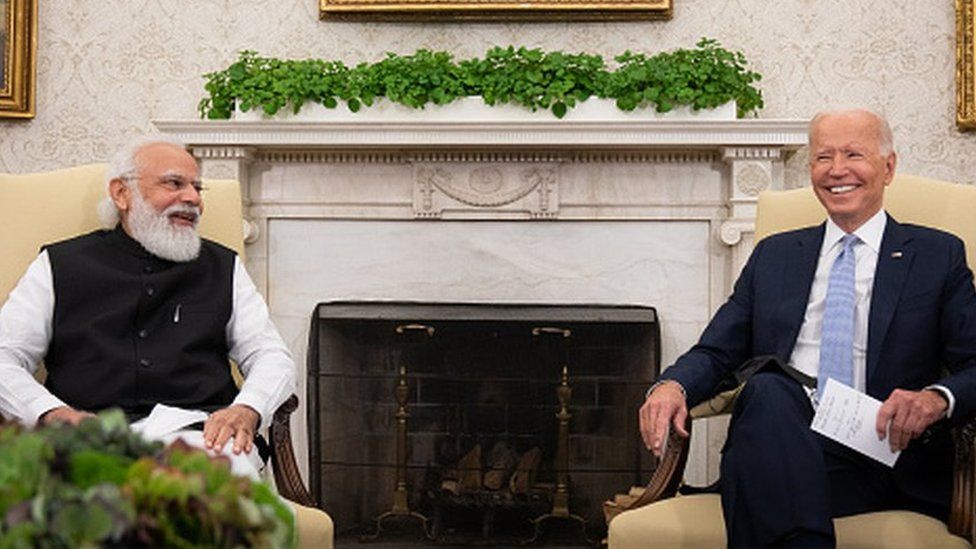
Indian Prime Minister Narendra Modi’s visit to the US has assumed huge significance amid global economic and geopolitical headwinds.
The White House is pulling out all the stops to welcome Mr Modi – it’s a state visit, the highest level of diplomatic protocol the US accords to visiting leaders. Mr Modi will be given a ceremonial welcome at the White House on Thursday before he holds direct talks with President Joe Biden.
Then there is the state dinner, a meeting with CEOs, an address to the joint session of the Congress and speeches to Indian-Americans, which have been highlights of Mr Modi’s past US visits.
But behind the carefully crafted ceremonies lie discussions that have the potential to not only infuse new energy into India-US relations but also have an impact on the global order.
The Indo-Pacific is where the US possibly needs India’s influence more than anywhere else right now.
The US has long viewed India as a counterbalance to China’s growing influence in the region, but Delhi has never been fully comfortable with owning the tag.
It may still be reluctant to do so but China continues to be one of the main catalysts driving India-US relations.
But India has not shied away from taking decisions that irk China. It held a military drill with US forces last year in Uttarakhand state, which shares a Himalayan border with China. Delhi has also continued to actively participate in the Quad – which also includes the US, Australia and Japan – despite angry reactions from Beijing.
Indian diplomacy has been getting more assertive about saying that this is the country’s moment on the global stage. It has good reason – India is one of the few economic bright spots in the world right now.Geopolitics is also in its favour – most countries want a manufacturing alternative to China, and India also has a huge market with a burgeoning middle class. This makes it a good option for countries and global firms pursuing a China plus one policy.
Tanvi Madan, director of The India Project at the Brookings Institution in Washington, DC, says that what matters to the US is what India does and not what it publicly says about China.
“At the end of the day, whether or not India has publicly embraced the tag, it is very clear that Indian governments have seen the US relationship as helpful as they deal with China,” she said.
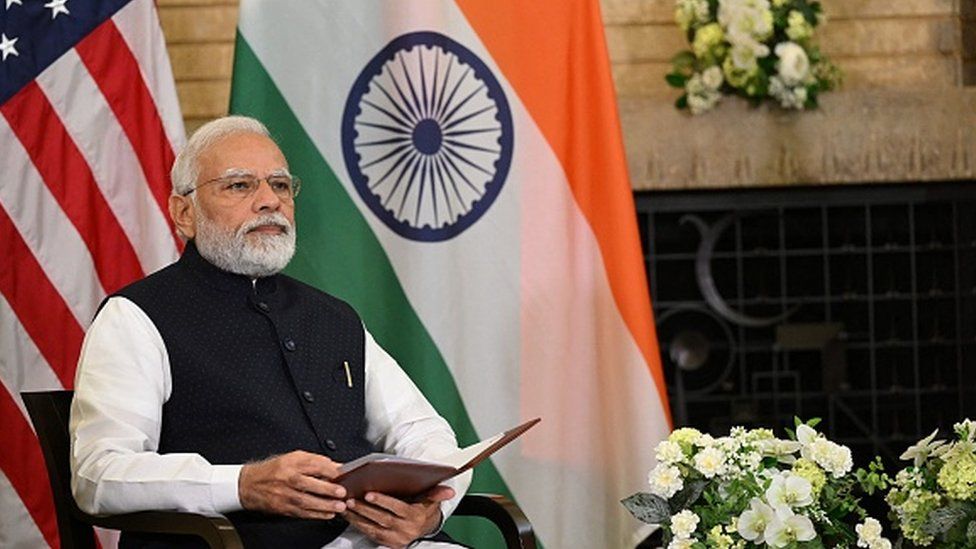
Michael Kugelman, director of the South Asia Institute at the Wilson Center think-tank in Washington, added that the two countries had now started “seeing eye to eye on the broader Indo-Pacific theatre”.
“We are starting to see the US recognise the importance of western components of the Indian Ocean region. For many years, India’s main concern, for good reason, was the Indian Ocean region. Whereas for the US, it was the Pacific and the South China Sea. They will look at maritime security for the region now,” he said.
The joint statement may not mention China directly but it will be high on the agenda as the two leaders discuss ways to consolidate their presence in the Indo-Pacific.
But while they agree on China, the two countries have had differing approaches to the Ukraine war.
Delhi has not directly criticised Russia, which analysts say is largely due to its huge dependency on Russian defence imports and its “time-tested ties” with Moscow.
India relies on Moscow for nearly 50% of its defence needs, but that’s not the only reason. India has always taken pride in following its policy of non-alignment – or strategic autonomy, as it has been called in recent years. It doesn’t want to be confined to a specific power centre in the global order, which irked Washington diplomats in the early months of the invasion.
But the US has softened its stance in recent months – it has even overlooked India’s continuous purchase of crude oil from Russia.
India too has gone a step forward by publicly calling for an end to the war.
Ms Madan added that the different responses to the invasion weren’t a deal-breaker in India-US relations.
“When there is strategic convergence, the two countries are incentivised to manage their differences. Maybe not eliminate them, but manage their differences. And I think that has happened with their differing stands on Russia,” she said.
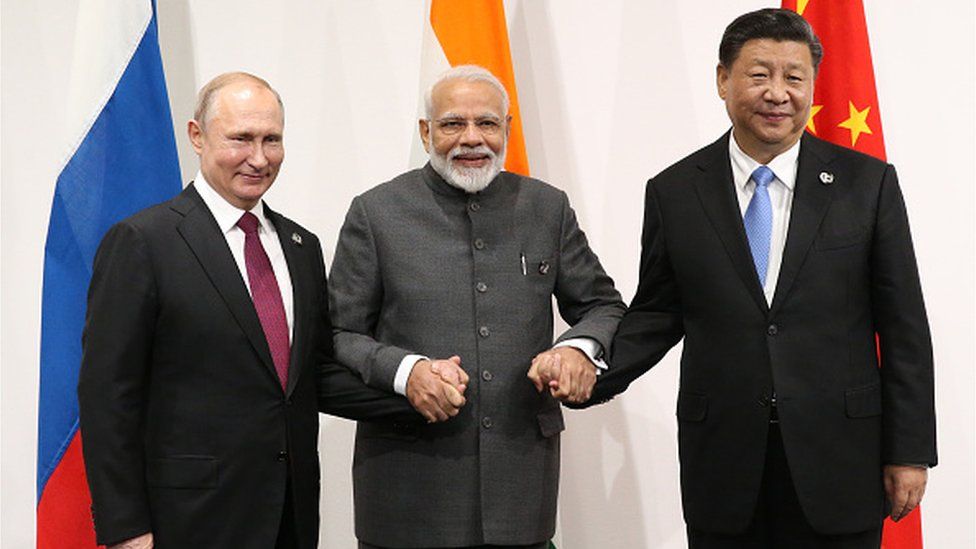
Meanwhile, other key areas of discussion include technology, defence and global supply chain management.
The two countries have signed what they call the Initiative on Critical and Emerging Technology. The deal will allow US and Indian firms and universities in different sectors, including IT, space, defence, artificial intelligence, education and healthcare, to work together.
The leaders may also announce more co-operation in technology, especially in semi-conductor manufacturing where China is the biggest player.
Defence is another area that has emerged as a key point of convergence.
India is the world’s biggest arms importer and Russia still accounts for a major chunk of it at 45%, data analysed between 2017 and 2022 suggests. But the headline here is that Moscow’s share used to be 65% until 2016 – that’s where the US sees an opportunity.
Washington’s share has grown but it’s still just 11%, behind France’s 29%. So some big-ticket defence deals are inevitable – they are likely to announce India’s purchase of the battle-tested MQ-9A “Reaper” drones and a deal between GE and Indian state-run firms to manufacture fighter jet engines in India.
Mr Kugelman says defence co-operation between the two nations “has come a long way”.
“If you look at the recent track record, one could argue that the treatment the US gives India is not dissimilar from what it gives to many of its allies,” he said.
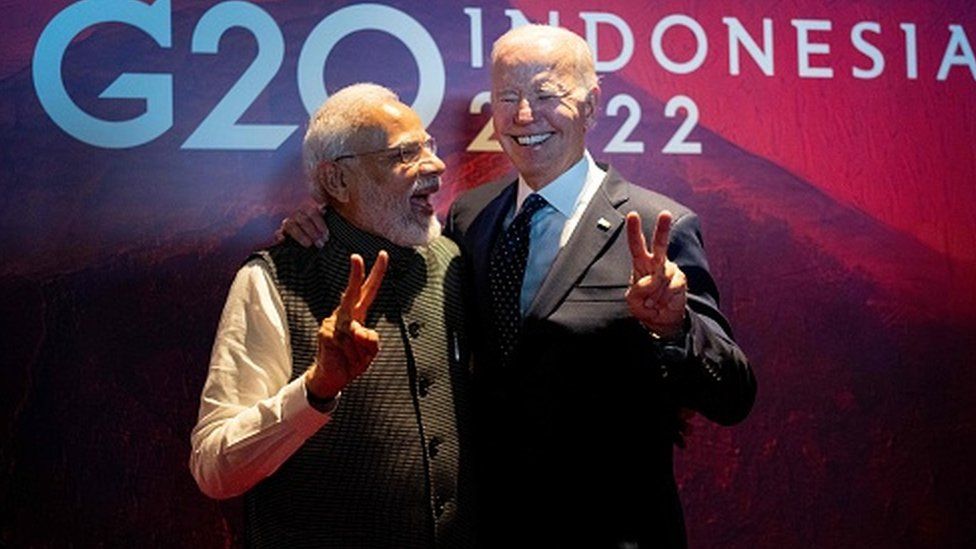
While defence and technology will most likely see some big announcements, the same can’t be expected in trade.
The US is now India’s top trading partner at $130bn, but analysts say there is still huge untapped potential. The two countries have had major differences over tariffs and export controls.India has signed a free trade agreement with Australia and Dubai and is discussing similar deals with others including Canada, the UK and the EU.No such deal is on the cards this visit but the leaders may discuss or at least lay the ground for solving trade-related issues in the future.
Mr Kugelman said the differences were not discarded but set aside in the interests of more mutually beneficial areas of co-operation.
But he added that trade between Indian and US firms has flourished in recent years despite inter-government differences.
It may not be the top priority but trade will certainly feature when the two leaders discuss global supply chain issues owing to the pandemic and China’s monopoly.
“Trade used to be a sore subject but I think the two sides are approaching trade policy differently today. But you can’t look at global supply chain issues without eventually discussing trade,” Ms Madan said.
The timing of the visit is also interesting as both countries will hold elections next year and the two leaders will be looking at sellable headlines for their domestic audiences.
So some big headline-making deals are inevitable. But then, US-India relations have always been complex – with decades of mistrust followed by rebuilding of trust and then occasional flare-ups.
But Mr Biden seems determined to make India-US relations shine even though some in his country have questioned India’s record on human rights under Mr Modi.
US Secretary of State Anthony Blinken’s recent statement says a lot about the status of the relationship: “We know that India and the United States are big, complicated countries. We certainly have work to do to advance transparency, to promote market access, to strengthen our democracies, to unleash the full potential of our people. But the trajectory of this partnership is unmistakable and it is filled with promise.”
BBC News India is now on YouTube. Click here to subscribe and watch our documentaries, explainers and features.

Read more India stories from the BBC:

Related Topics
-
-
3 March 2022

-

